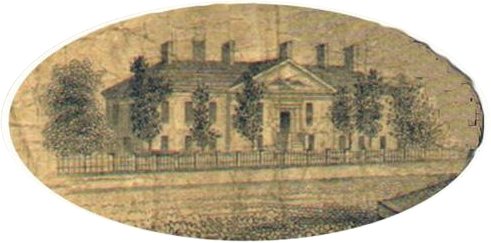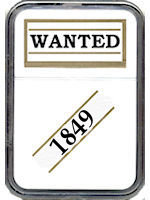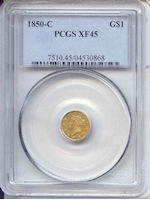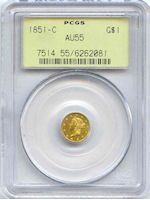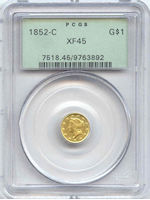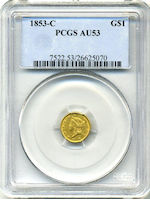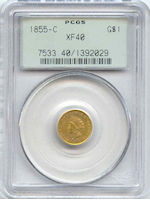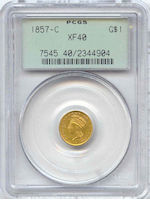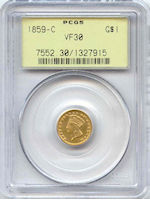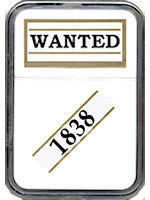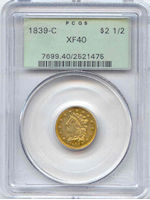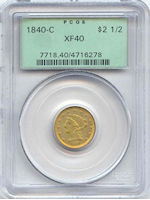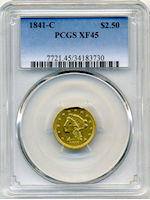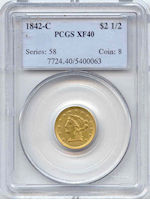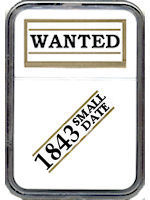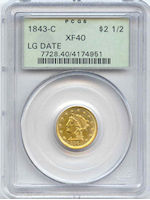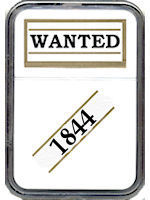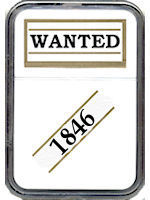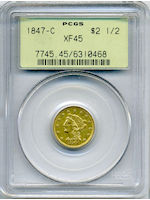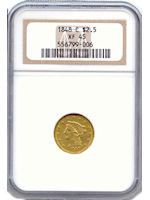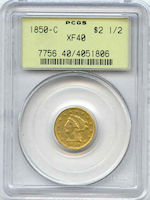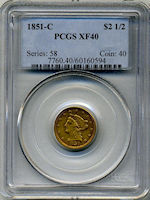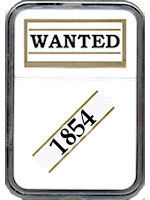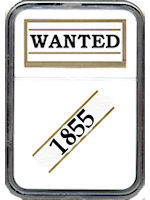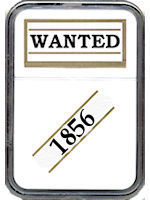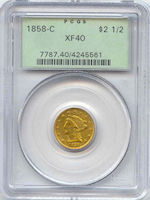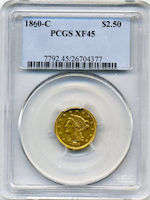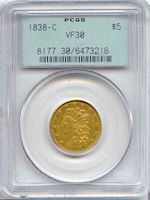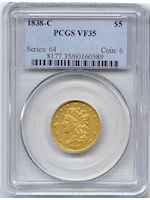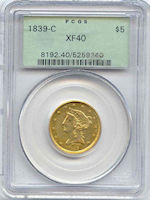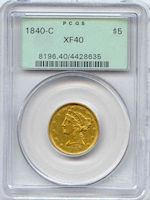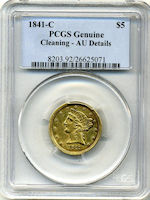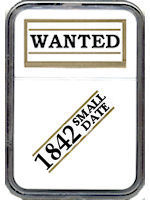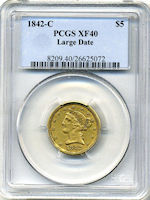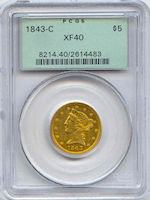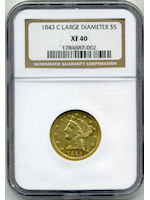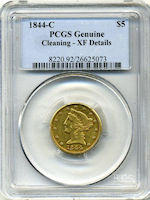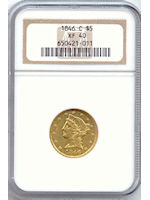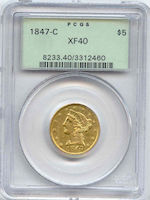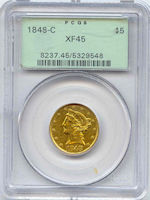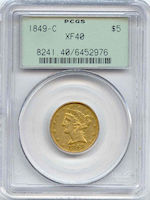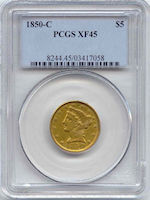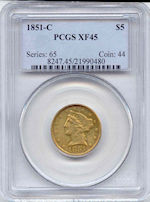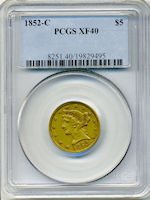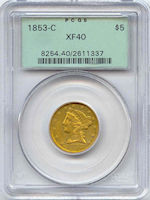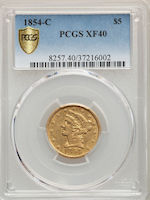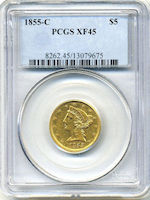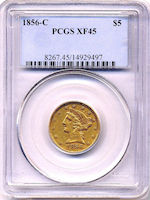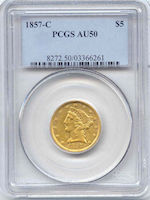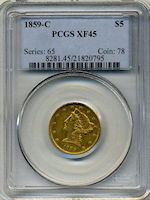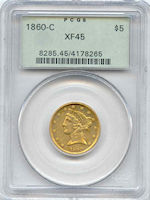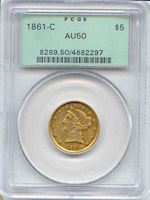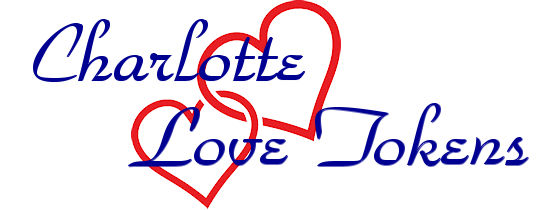|
The United States Branch Mint
Vingette of the Charlotte Branch Mint Building Charlotte Coinage By Type The history of the coinage of the Charlotte Branch Mint can be illustrated with a type set containing just nine coins. The Charlotte Branch Mint struck coins in only three denominations -- the half eagle (four types), the quarter eagle (two types), and the gold dollar (three types) -- during its brief history from 1838 to 1861.
Charlotte Coinage By Date During its short life as an active United States Branch Mint, Charlotte struck fifty-three distinct denomination, date and variety gold coins. Eight examples of the gold dollar were struck including open and closed wreath varieties of the 1849. Granted with only a handful known the 1849 open wreath is not really collectible to us mere mortals. Twenty examples of the quarter-eagle were struck including small and large date varieties of the 1843. All of which with a little work are obtainable. Twenty-five examples of the half-eagle were struck including small and large date varieties of the 1842 plus normal and broad mill varieties of the 1843. Again, all are obtainable.
Charlotte Branch Mint Ephemera 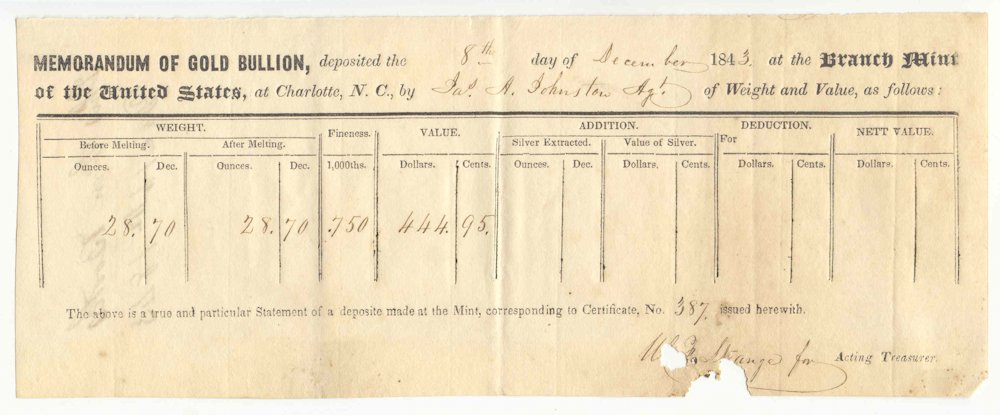 1843 Gold Bullion Receipt from Charlotte  1901 Charlotte Assay Office Gold Bullion Receipt The United States Assay Office While, the advent of the Civil War marked the close of the Charlotte Branch Mint as a coining establishment in early 1861, it was reestablished by appropriation of Congress as an assay office on March 19, 1867. While opened during physical year 1868, its first full year of operation would be 1869. That year the office would only assay a mere $3,160.40 in gold. The next year it would assay some $16,108.80 followed in 1871 by just $14,668.12. The Charlotte Assay Office was not off to a roaring start! 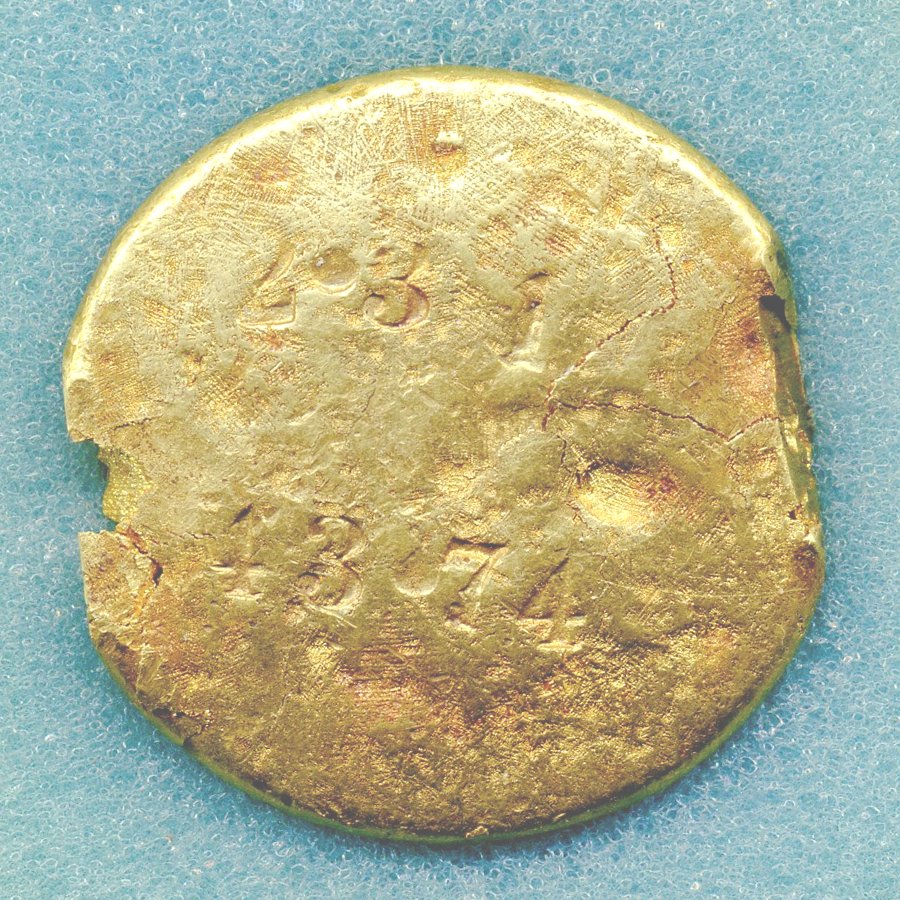 Charlotte Assay Office Gold Gold Slug Described by the Receipt Below Based on these statistics there were many in the Treasury Department that advocated for and would have closed the Assay Office as a cost savings to the Government. Despite this slow beginning the people of North Carolina still longed for the reopening of their Mint. In 1873 the debate came to the forefront. Congress was debating the an “Act Revising the Laws Relative to Mints and Assay Offices and the Coinage of the United States” and the North Carolina General assembly was working on a “Joint Resolution In Regard To The Branch Mint At Charlotte, North Carolina.” The resolution passed on February 4 called on “our senators and representatives in the Congress of the United States be instructed to secure such legislation respecting said Branch Mint as will establish it permanently and increase its usefulness.” With much disappointment to the folks in North Carolina, the Federal Act was passed on February 12 officially downgrading the title of the Branch Mint down to that of Assay Office. While North Carolina did not get its Mint restored to full operation things could have been worse, the Assay Office could easily have been shuttered.  1901 Charlotte Assay Office Gold Bullion Receipt Describing the Slug Above The Assay Office would continue to operate until it was finally closed on July 31, 1913.
OMG! What were they thinking? In today's numismatic marketplace where Charlotte minted coins are so highly prized it is difficult to understand why someone would deface such an expensive coin. Well, there was a time when mintmarks didn't matter and these coins changed hands in commerce at face value. It was in that time that these coins had the luck or was it misfortune to be selected at random to become a token of one individual's love for another. Either way they have become a collecting niche today - Charlotte Gold in love tokens and jewelry! LOVE TOKENS  Love Token carved on a 1853 Charlotte Dollar 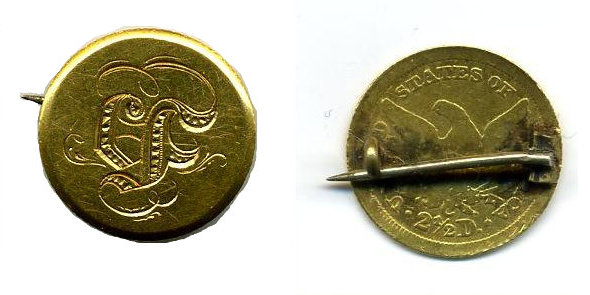 Love Token carved on a Charlotte Quarter Eagle 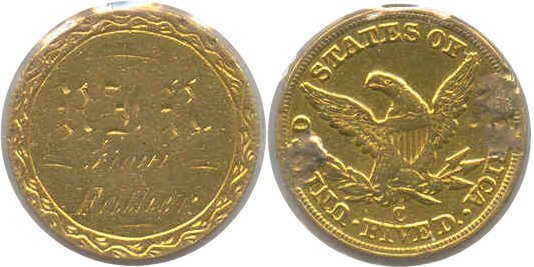
Love Token carved on a Charlotte Half Eagle JEWELRY 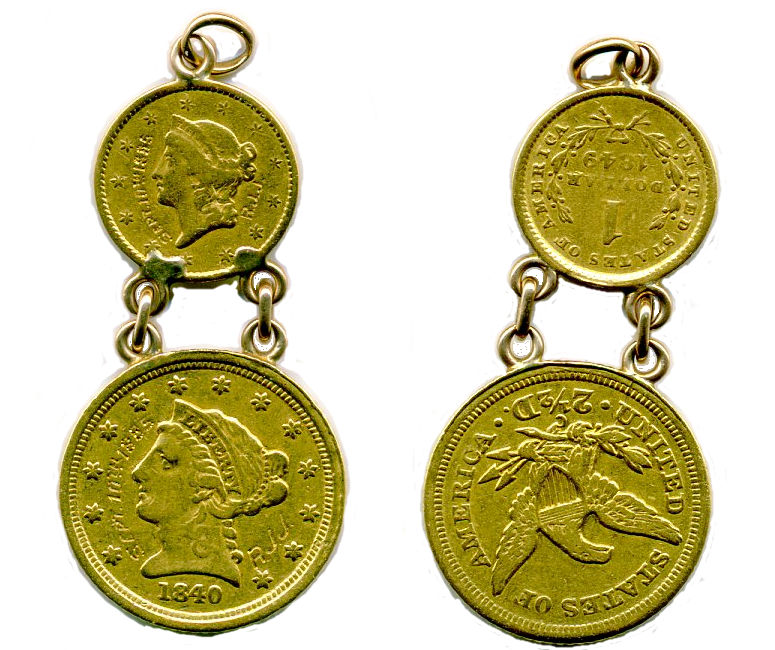
Pendent designed to be worn around the neck from a chain !!! COUNTERFEITS !!! 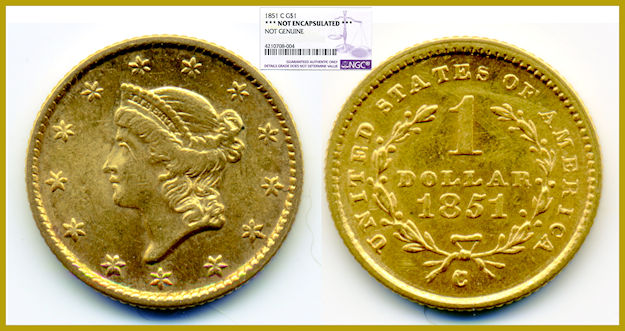
(Click on picture above for a 2400 dpi high resolution image) This counterfeit coin was discovered at a local coin shop and confirmed when the proprietor submitted it to NGC for a second opinion for his customer. After discussing the coin with the coin shop proprietor at our local coin club a deal was struck where I could purchase the coin. My purpose is to share and hopefully educated fellow Charlotte gold collectors about this threat to our hobby. 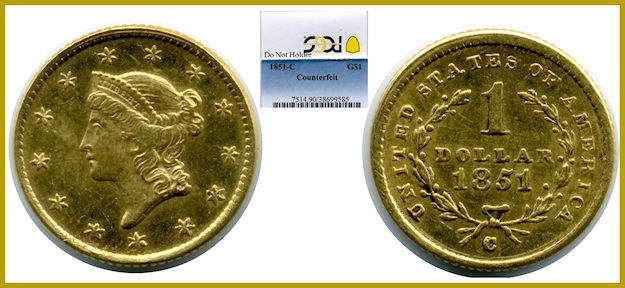
(Click on picture above for a 2400 dpi high resolution image) Oh my God, a second counterfeit! This example was found at a local coin show. A dealer who was familiar with my counterfeit asked me to look at a raw 1851-C dollar on behalf of another dealer and give my opinion as to whether it was "good" or not. I did them one better - the next day I brought my genuine slabbed and the NGC identified counterfeit 1851-C dollars to the show for side-by-side comparison to the suspect one. I was convinced it was counterfeit but the dealer wanted to send it to NGC to get a professional opinion. I couldn't blame him as there was real money at stake. However, I offered to buy the coin at melt and pay for the certification fees if he would instead send it to PCGS. Well the fact you are looking at the picture and reading this you know how that tuned out. For the record both coins tested good for gold content. I suspect their planchets were made from US twenty-dollar gold pieces. I further suspect they are more likely from the Middle East than from China. I recommend you study the high resolution images and form your own opinion. But if nothing else just beware of raw 1851-C dollars they just might be bad! 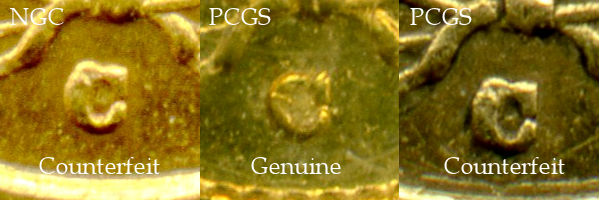
Side by side comparison of mintmarks (Click here for a 2400 dpi high resolution image of genuine coin)
| |||||||||||||||||||||||||||||||||||||||||||||||||||||||||||||||||||||||||||||||||||||||||||||||||||||||||||||||||||||||||||||||||||||
